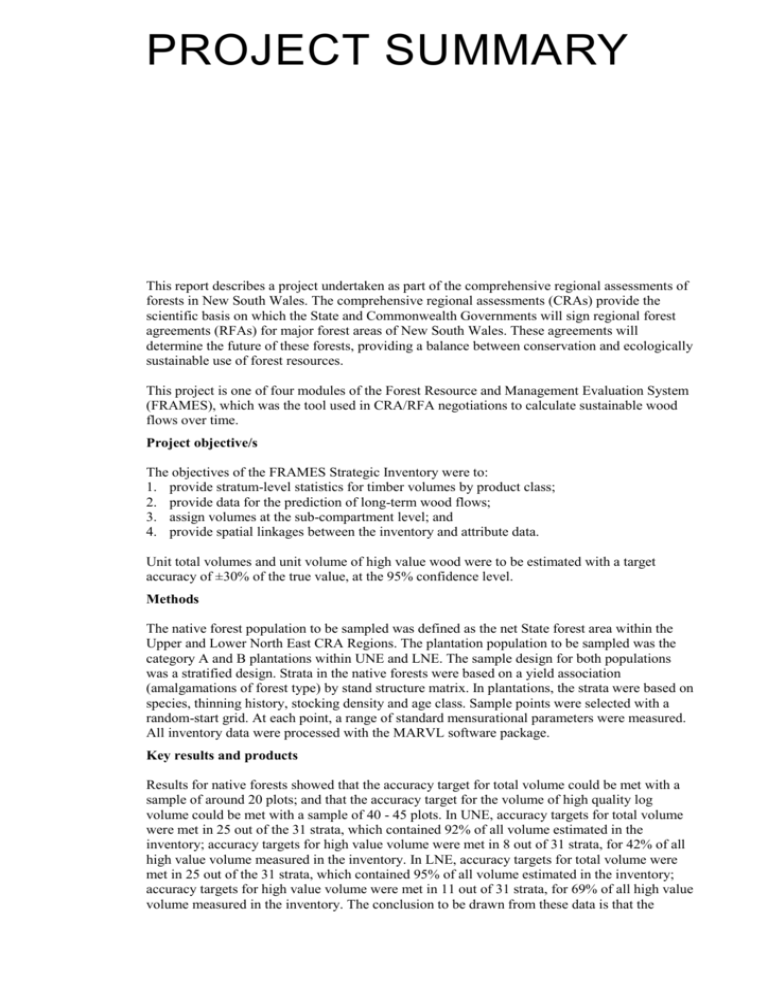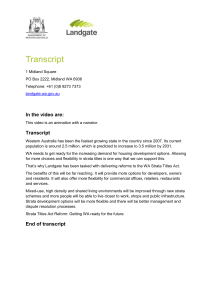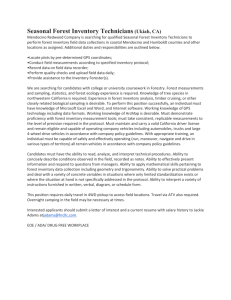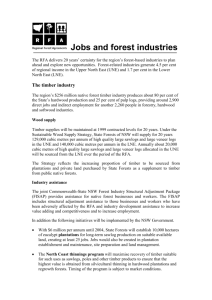This report describes a project undertaken as part of the
advertisement

PROJECT SUMMARY This report describes a project undertaken as part of the comprehensive regional assessments of forests in New South Wales. The comprehensive regional assessments (CRAs) provide the scientific basis on which the State and Commonwealth Governments will sign regional forest agreements (RFAs) for major forest areas of New South Wales. These agreements will determine the future of these forests, providing a balance between conservation and ecologically sustainable use of forest resources. This project is one of four modules of the Forest Resource and Management Evaluation System (FRAMES), which was the tool used in CRA/RFA negotiations to calculate sustainable wood flows over time. Project objective/s The objectives of the FRAMES Strategic Inventory were to: 1. provide stratum-level statistics for timber volumes by product class; 2. provide data for the prediction of long-term wood flows; 3. assign volumes at the sub-compartment level; and 4. provide spatial linkages between the inventory and attribute data. Unit total volumes and unit volume of high value wood were to be estimated with a target accuracy of ±30% of the true value, at the 95% confidence level. Methods The native forest population to be sampled was defined as the net State forest area within the Upper and Lower North East CRA Regions. The plantation population to be sampled was the category A and B plantations within UNE and LNE. The sample design for both populations was a stratified design. Strata in the native forests were based on a yield association (amalgamations of forest type) by stand structure matrix. In plantations, the strata were based on species, thinning history, stocking density and age class. Sample points were selected with a random-start grid. At each point, a range of standard mensurational parameters were measured. All inventory data were processed with the MARVL software package. Key results and products Results for native forests showed that the accuracy target for total volume could be met with a sample of around 20 plots; and that the accuracy target for the volume of high quality log volume could be met with a sample of 40 - 45 plots. In UNE, accuracy targets for total volume were met in 25 out of the 31 strata, which contained 92% of all volume estimated in the inventory; accuracy targets for high value volume were met in 8 out of 31 strata, for 42% of all high value volume measured in the inventory. In LNE, accuracy targets for total volume were met in 25 out of the 31 strata, which contained 95% of all volume estimated in the inventory; accuracy targets for high value volume were met in 11 out of 31 strata, for 69% of all high value volume measured in the inventory. The conclusion to be drawn from these data is that the forests of LNE are more uniform than the forests of UNE. Although the target confidence limits were not met for all strata, the data were considered to be sufficiently close to the confidence limits for the more important strata to effectively underpin long term yield estimates. Strategic Inventory data is passed to the FRAMES Yield Simulator for calculation of the range of future yields that then underpin the sustainable yield calculations performed by the FRAMES Strategic Yield Scheduler. All plot locations and associated strata are stored in a GIS database.







